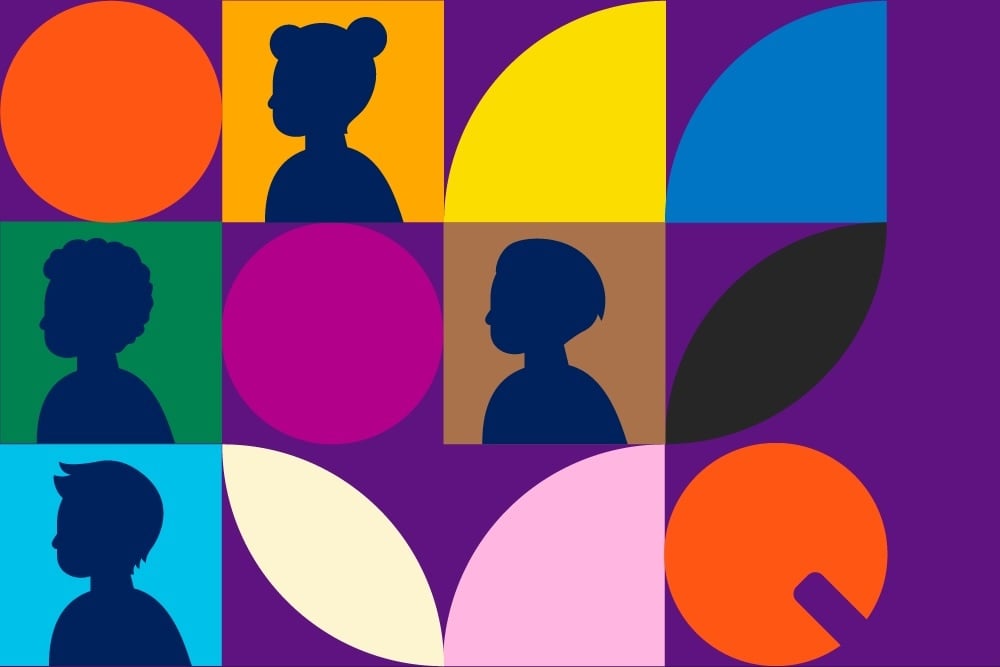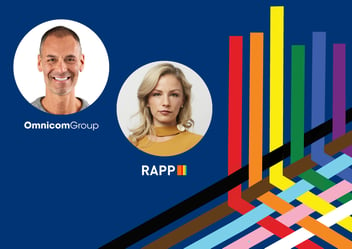What consumers really want from LGBTQ+ advertising in 2025 and how brands can deliver
As political pressure builds and polarizes, LGBTQ+ advertising in 2025 finds itself in a precarious position. The volume is lower and the messaging is softer, but consumers expect brands to stand with diverse communities with authenticity and integrity in their advertising. In DISQO’s 2024 LGBTQ+ Advertising & Brand Experience report, 80% of LGBTQ+ respondents said they thought more positively of brands that celebrated Pride, and 50% of the general population said year-round support for LGBTQ+ communities is important.
While this visibility trend continues as the baseline, now, allyship is assumed, and integrity is the differentiator.
- Gen Z & Millennials: The inclusion generations
- Visibility without accountability isn’t enough in DEI advertising
- Ad placement: Personalization, platforms, and the power of DEI campaigns
Gen Z & Millennials: The inclusion generations
When asked which groups DEI efforts typically cover, Gen Z and Millennials were the most likely to recognize the full scope of inclusion, from racial and ethnic minorities to older people, parents, and caretakers. This is a fundamental shift from Boomers and Gen X: younger generations understand intersectionality and apply that expectation to the brands they support. This evolution began with a 175% increase of LGBTQ+ identification by Millennials (14%) over Gen X (5%) and Boomers (3%).
This leap occurred as representation in pop culture increased, access to resources on- and offline improved, and “bisexual” or “queer” identification rose. Through this lens, Gen Z added urgency: not just representation, but representation with consequences. Gen Z and Millennials are the growth engine of the consumer economy, expecting a new standard for DEI considerations.
The integrity framework: Visibility without accountability isn’t enough in DEI advertising
This year, 40% of consumers say LGBTQ+ inclusion in advertising is a basic expectation. Among LGBTQ+ audiences, 61% want brands to actively affirm their DEI values, and 87% say inclusion must come from the inside out, with queer people involved in the creation of the ads themselves. Support for brand integrity isn’t limited to LGBTQ+ respondents. When asked whether it’s important that brands create advertising with involvement from the communities represented, strong majorities across every demographic group agreed.
We’ve all seen the rainbow rebrands that vanish on July 1 or the ads that cast queer faces without queer voices shaping the narrative. These gestures may read as authentic in the moment, but they rarely build the brand equity that lasts, and the public is catching on. Only 41% of respondents say LGBTQ+ ads feel authentic. Nearly one in four people across demos actively distrust the diversity marketing and representation they see, so marketers must prove and nurture allyship and trust with consumers.
Consumer sentiment doesn’t match the headlines
When brands advertise in LGBTQ+ media environments (queer shows, podcasts, and publications), less than two percent say it negatively impacts their purchase behavior. And more often than not, it helps. Roughly 77% of LGBTQ+ people say these ads influence their consideration or purchases. That includes 40% who say it prompts immediate action. Gen Z, Millennials, and even higher-income earners follow similar patterns. The takeaway is media optics don’t match consumer behavior, and that disconnect is an opportunity for brands to lead with a strong, inclusive advertising strategy. The backlash that dominates political narratives simply isn’t mirrored in purchasing patterns.
Ad placement: Personalization, platforms, and the power of DEI campaigns
TV and social media are still the leaders of LGBTQ+ ad recall, but their roles are shifting. Although expensive real estate, TV remains number one, and social media is a strong second, especially among Gen Z, lower-income, and LGBTQ+ audiences. It offers a more flexible storytelling canvas, more opportunities for personalization, and a faster feedback loop. Online and mobile ads follow closely, especially for LGBTQ+ respondents, who are highly engaged and digitally present. These findings should excite media planners and creative teams because the community is active, passionate, and watching.
Creative responsibility: From storytelling to strategy
Across every demo, people want “the same or more” visibility for LGBTQ+ people in ads. They don’t just want representation, they want involvement in inclusive advertising. If you’re a creative director, brand strategist, or media planner, you can:
- Prioritize inclusive casting that reflects intersectional diversity
- Hire creatives from the communities represented
- Choose platforms where your audience already engages
- Advocate for budget allocation that supports a sustained, not seasonal, presence
These aren’t radical demands; they’re realistic action items that align with measurable ROI. And perhaps most critically, you can push your organization to show, not tell. When Gen Z and Millennials were asked how brands should demonstrate inclusive marketing support, they chose: share DEI commitments, create inclusive products, prioritize diverse casting and workforce policies, and develop educational content.
The real risk: Ignoring your audience
Despite the headlines, the greater risk isn’t speaking up—it’s stepping back. This year’s report found that 43% of consumers said their support increases when brands maintain LGBTQ+ inclusion despite backlash. Among LGBTQ+ respondents, it rises to 80%. Conversely, 24% of consumers say they’d quietly stop buying from brands that roll back their DEI commitments. Only five percent say they’d increase their purchases in response.
Even more notable is that 50% of non-LGBTQ+ consumers say DEI rollbacks decrease their trust. That’s a loyalty crisis in the making that leads us to the elephant in the boardroom: political pressure. When asked why consumers think companies scale back DEI, most consumers cite politics, fear of losing customers, and controversy avoidance. But here’s the thing: politics doesn’t buy your product or service–consumers do. And they are overwhelmingly signaling that LGBTQ+ inclusion, integrity, and consistency matter. So no, you don’t have to be loud, but you do have to be present.




